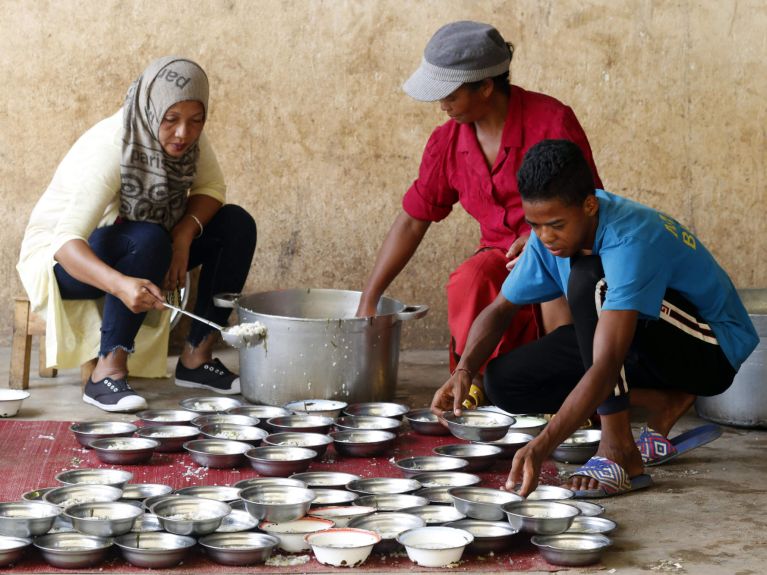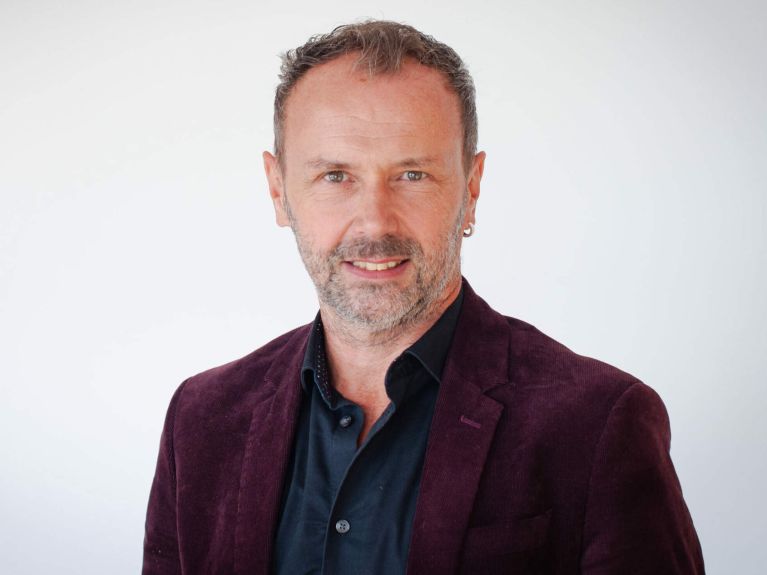“Aid organisations are enormously effective all around the world”
Emergency aid expert Ralf Südhoff talks in an interview about the opportunities and possibilities of humanitarian aid and development cooperation.

Germany spent around 33.3 billion euros on development cooperation in 2022, of which around 2.2 billion euros came from public funds for humanitarian aid. Which of the two areas is more important?
Neither of these two forms of aid is more important than the other, the key question is rather: when does which type of support take priority? After all, the resources available will always be more limited than what is needed worldwide. This is also a key issue at the present time, given that the last 20 years has seen a rapid increase in acute emergencies. Over 300 million people are dependent on humanitarian aid: more than 50 billion US dollars would be needed to cover this in 2024, but forecasts suggest that actual funding will fall far short of this figure. At the beginning of the 2000s, a total of 2 to 3 billion US dollars was still sufficient to help all those who were suffering the greatest hardship. This is why aid organisations have tough decisions to make, too: where do we deploy our scarce humanitarian resources – to help those starving in the Horn of Africa,, victims of war in Ukraine, or displaced people in Syria? And how much money are we taking away from longer-term development programmes, maybe saving lives initially but at the same time preventing the education of children, for example – who can then be expected to account for the next wave of poverty, giving rise to a need for yet more emergency aid? Despite the rapid increase in these conflicting goals, most countries in fact continue to spend far less money on emergency aid than on development – on average only around 15 percent of their total aid. The figure for Germany is around 10 percent.
Sometimes the results are much more positive than is generally assumed.
The success of humanitarian aid can be measured: those who are starving at least benefit to some extent from emergency assistance. Is it possible to quantify the success of development cooperation, too?
Essentially, yes – and the results are sometimes much more positive than is generally assumed: poverty has decreased significantly worldwide in recent decades, life expectancy as an indicator of numerous factors such as health, nutrition and prosperity has increased, and there are now far fewer deaths among children under the age of five and mothers in childbirth. The challenge is to measure the extent to which development aid has contributed to this, since factors such as economic growth and governance also have a major role to play. But the reverse is true as well: the purpose of development aid is often called into question when famines occur in the Horn of Africa, for example, or when massive setbacks occur in the wake of the coronavirus pandemic. This clearly has little to do with the effectiveness of the aid, however: it’s more the result of overriding conditions such as man-made climate change or our global management of epidemics and vaccines. Development aid doesn’t account for a very large volume in terms of finance, so it can only ever be one factor – often only alleviating undesirable developments to a certain extent.

Humanitarian aid often leads to development cooperation in the aftermath of an emergency situation. By the same token, it may be necessary to provide emergency aid in countries where development projects are underway. Do these transitions work?
Not in the way they should: the question of ensuring sound links between emergency assistance and development aid has occupied aid organisations and governments for decades – just think of the recurring discussions in Germany about whether the development ministry and the foreign ministry responsible for emergency aid should be merged.
Non-governmental organisations are crucial to development cooperation, and especially emergency aid. Does the collaboration between the various players work?
There are considerable variations here too, and for very different reasons: in some cases there is simply a lack of coordination because of insufficient time and resources for meetings. Sometimes there are vested interests that stand in the way. For example, there’s a consensus that much more aid should be provided by local organisations on the ground since they are more familiar with the local situation, can work more effectively and often have better access. Yet many international aid organisations find it extremely difficult to give up a slice of the pie since there is a lot of money at stake and jobs too, of course. But there’s no doubt about it: aid organisations are enormously effective all around the world, in extremely challenging war zones and in response to natural disasters – and often at great personal risk. The aim must be to make aid even better and more effective – precisely because it is more important today than ever before.
___________________________
Ralf Südhoff is Director of the CHA Centre for Humanitarian Action in Berlin. The CHA is an initiative of humanitarian non-governmental organisations that aim to strengthen emergency aid from Germany and internationally.


